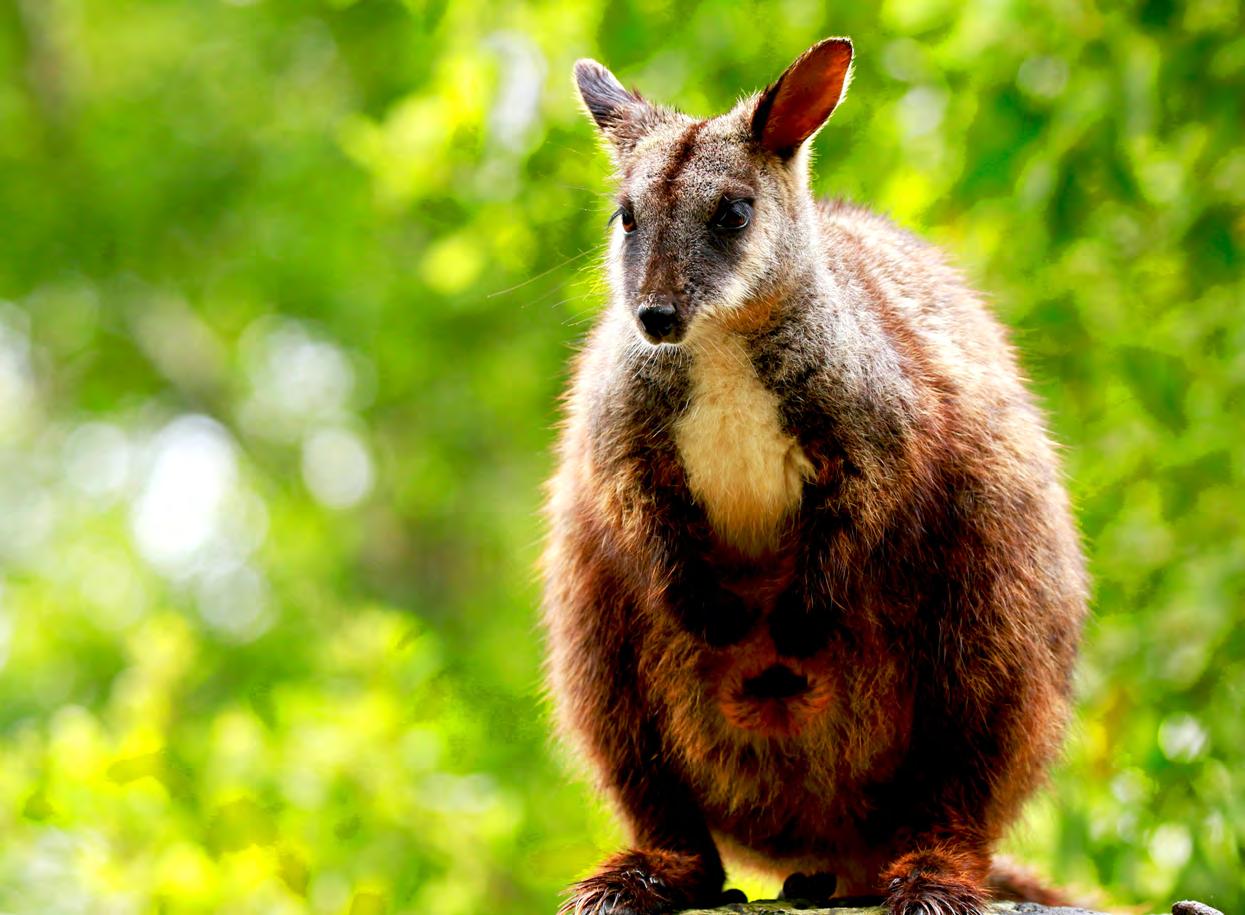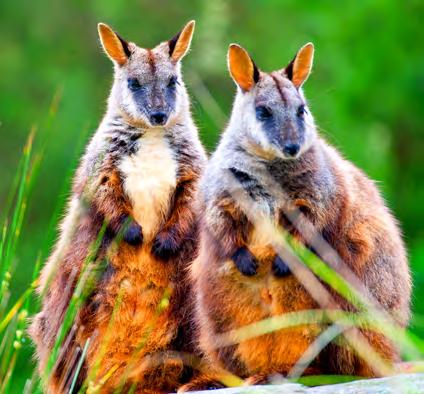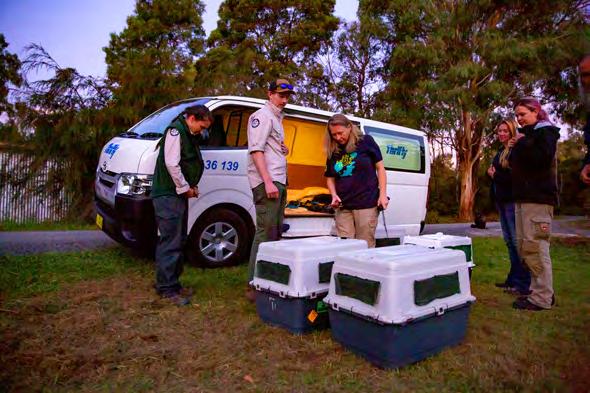
3 minute read
Victoria's Rock stars
Shy and elusive yet incredibly agile, the Brush-tailed Rock-wallaby is a unique species worth fighting for.
WORDS Jo Stewart
Safe keeping
With striking features, long eyelashes and a multicoloured coat, the Brush-tailed Rock-wallaby is one of Australia’s cutest native species. While this marsupial W registers highly on the adorable scale, there’s another less enviable list it’s found itself on.
“They’re the most critically endangered species of any mammal in Victoria,” explains Dr Marissa Parrott, reproductive biologist with the Wildlife Conservation and Science team at Zoos Victoria. “Early last century, Brush-tailed Rock-wallabies were thought to be extinct in Victoria. They were rediscovered in the 1930s when small populations were found in East Gippsland and the Grampians.”
Like many native species, these small creatures (which generally weigh less than eight kilograms) are threatened due to habitat loss and predation by cats and foxes. They were also hunted for their fur in the 1800s. As a result, fewer than 50 Brush-tailed Rock-wallabies can be found in the wild in Victoria, with small populations in Snowy River National Park and Grampians Gariwerd National Park.
Crepuscular by nature (meaning they are most active at dusk and dawn), these herbivorous marsupials live in gorges and rocky habitats and have an impressive ability to climb and jump.
“They’re almost acrobatic. They have a long tail that helps them to balance and granulated feet, which give them a good grip to get around rocky crevices,” says Marissa.
Marissa started her career at Zoos Victoria more than 10 years ago, working as a Zoo Keeper, including with these wallabies, at Healesville Sanctuary. She says that the work being done by Zoos Victoria and its partners is essential to the long-term survival of the species. The revenue made from memberships directly helps to fund programs that allow Zoos Victoria to protect threatened species, like the Brush-tailed Rock-wallaby.
Zoos Victoria aims to boost the species’ numbers by supporting captive breeding and the release of captive-bred wallabies into the wild. “A captive breeding program is often the only insurance we have against animals going extinct,” says Marissa. “By creating new populations in fox- and cat-free

Brush-tailed Rock-wallabies
Credit: Zoos Victoria
fenced areas and out in the wild, we’re helping to ensure we don’t lose this amazing species.”
Found in south-east Queensland, New South Wales and Victoria, it’s the southern subpopulation in the latter region that is the most fragile, with a lack of genetic diversity posing another threat.
“We are working to give the southern population a boost to ensure they’ve got the healthiest population for the future.”
COURAGE UNDER FIRE
When bushfires approached Tidbinbilla Nature Reserve in the Australian Capital Territory earlier this year, urgent action was taken to capture and move the Brush-tailed Rock-wallabies to safety. Two were moved to Sydney’s Taronga Zoo, while 17 were flown on military aircraft to Avalon Airport and transported by road to Mt Rothwell. Another group of four was relocated to Healesville Sanctuary. Dr Marissa Parrot vividly remembers the night she awaited the arrival of the precious cargo – following their full day trip away from the fires. When the team finally arrived in the dark at 9pm, Marissa says, “everyone looked exhausted but very happy to have reached Healesville Sanctuary – we were so pleased the wallabies had arrived looking well and spritely.” The evacuation required a collaborative effort between Healesville Sanctuary and Tidbinbilla Nature Reserve, with vets, Keepers, horticulture staff and works teams helping to prepare enclosures and putting quarantine measures in place. “Seeing those wallabies arrive with the team from Tidbinbilla after a long road trip across state lines was a beautiful moment,” says Marissa. “They were fleeing a hot, smoky environment, so seeing them enjoy the green grass and cooler temperatures at Healesville was special. “It was a big team effort by the Tidbinbilla and Healesville teams to ensure the welfare and care of the wallabies,” Marissa reflects. “It was an intense time, but it went really well.” After five weeks at Healesville Sanctuary, the Brush-tailed Rock-wallabies returned home to Tidbinbilla Nature Reserve.

THANK YOU
With the donations from our bushfire appeal we have been able to help many critically injured animals.
WE’RE OPEN
Come and see the Brush-tailed Rock-wallabies at Healesville Sanctuary. Visit zoo.org.au to book your free member tickets.







